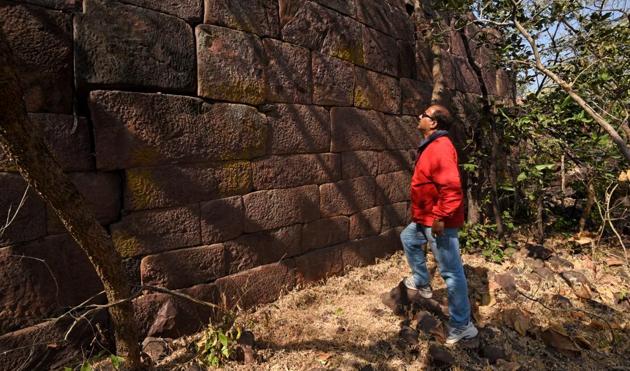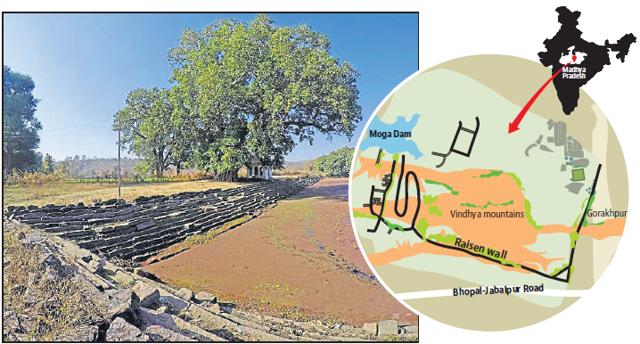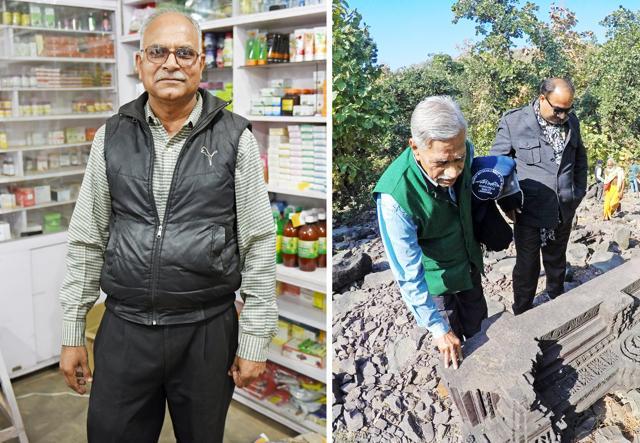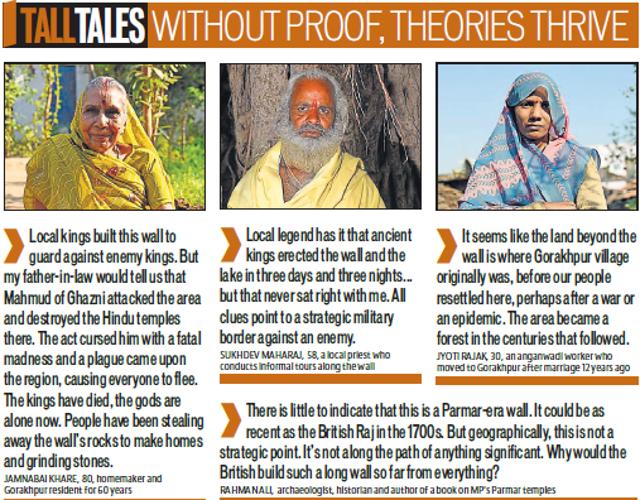The Great Wall of India: 80km ‘diwaal’ is an ancient mystery no one knew about
Deep in the heart of Madhya Pradesh stands a wall that may well be the country’s longest. When was it built? Why? Explorers have only just started looking for answers
It’s a whodunit, a jigsaw puzzle and a history lesson all in one. In the heart of Madhya Pradesh, at the very centre of India, stands a massive stone wall that’s odd, as walls go. It runs straight in parts, zig-zags wildly in others, stops or branches off where you least expect. Some sections tower at 15 feet; others are a just a low stretch of rubble .

History buffs are calling it the Great Wall of India, and if it does run for 80 kilometres as they suspect (many sections still need to be excavated), it may well be India’s longest fortification and, worldwide, second only to China’s. Locals however refer to it simply as ‘diwaal’, a structure that’s been at the back of their villages, and the back of their minds, for as long as anyone can remember.
The barrier stands halfway between Bhopal and Jabalpur, stretching from the tiny township of Gorakhpur-Deori to Chokigarh in Chainpur Bardi in the Raisen district. It cuts through Vindhya valleys, teak forests, langur domains and wheat fields. At one point, it is interrupted by a 20-year-old dam.

Everywhere it goes, surprises follow. Discovered thus far are ruins of long-abandoned dwellings, debris from magnificent temples, fragments of statues, step wells, a pond with sandstone banks, compounds, stairs and strange snake insignias. Experts say we’ve only scratched the surface of its secrets.
History’s mystery

Raisen pharmacist, Rajeev Chaubey, 57, has been fascinated by the wall ever since he heard about it in the 1980s. He recalls riding triple-seat on a motorbike for hours to reach the ruins, packing jam sandwiches so he and his friends could spend the day exploring.
Then, four years ago, a hermit walked into his chemist store. “He was from Gorakhpur,” Chaubey says. “I mentioned the wall and he said that one end ran by his dwelling at the jungle’s edge. He was keen to study it too.”
The 58-year-old hermit Sukhdev Maharaj hosted enthusiasts on overnight trips, allowing them to track the wall deeper into the forest. He also guided them, barefoot, to temple relics hidden under blankets of teak leaves.
“No seals or inscriptions have been found, so we can’t link the wall to a king or a period,” admits Narayan Vyas, who made several surveys of the wall after he retired from the Archaeological Survey of India a decade ago.

The structure itself offers a few clues. It’s made from large, evenly sized, local stones that interlock like Lego bricks, without mortar, indicating some kind of planning. At the points where steps have been found, they’ve been built, without exception, on the same side of the wall, indicating an ‘inside’ zone. Well-preserved sections show a flat top wide enough to walk on, lookout points, drainage and niches to hide men or weapons .
“It seems like a military rampart,” says Raghavendra Khare, 45, a Gorakhpur astrologer who joined Vyas on a survey last year. “What could they have been trying to keep out in a forest in the middle of nowhere?”

Pieces of the puzzle
Answers come easier when you consider that perhaps this wasn’t always a forest. Vyas estimates that the temple relics and the wall, date to the 10th or 11th century, when warrior clans ruled the heart of India.
“This could have been the border of the Parmar kingdom,” Vyas says, referring to the Rajputs that ruled west-central India between the 9th and 13th centuries. The wall would likely have marked their territory against the Kalachuris, a clan that established a capital close to today’s Jabalpur, 150 km away. “They fought a lot, and the wall was probably a Parmar effort to keep them out.”

What they kept in was a distinctive style of architecture – a clue to its origins. While the fortification’s interlocked technique matches the Parmar-era Bhojeswar temple near Bhopal, the relics strewn about inside the forest tell rich tales. “Parmar kings followed the bhumija pattern for their temple spires,” Vyas says. “They were tapered, with rows of smaller spires, which show up among these ruins.” The layout, a platform for a central structure and small shrines in the corners, mirrors the plan of Omkareshwar, a Parmar temple in the south of the state.
“All we need is evidence to confirm what we suspect – that we’ve found the remnants of a 1,000-year-old realm,” Vyas says.
Read: A mystery in pictures. Raisen's wall has much to see and much to wonder about
On the fence
Some already disagree. Rahman Ali, a historian who has written a book on the Parmar temples of MP, visited the sites in 1975 and admits he didn’t study them closely. “But they don’t seem to be Parmar,” he says. “There is a tendency to ascribe everything old from this region to the Parmars, but the dynasty would have been crumbling in the 12th century, not building massive walls.”
The standardised stone barricades may be much younger, “perhaps even 17th-century British-made,” Ali says. “But these areas weren’t important to the Raj. Why would they build a long wall and abandon it?”
The questions resonate along the trail of stones. There’s reason to believe the wall, now in bits and pieces, was never finished in the first place. Chaubey notes that it displays various stages of completion, including spots where stones were heaped, but never assembled.

Those looking to solve the puzzle face another challenge – several relics and stones have been stolen. Jamnabai Khare, who’s lived in Gorakhpur for 60 of her 80 years, recalls seeing a Sinhavahini, a goddess astride a lion, which is now missing. Chaubey has a photograph of an intact statue of Kal Bhairav, an incarnation of Shiva (others are missing heads or limbs). “The image is all that remains – the idol was stolen last year.”
The ASI has no plans to survey the area and chose not to contribute to this story. Official studies, when they begin, may be hampered as much of the wall is on forest land.

For now, the mystery remains. Vyas says that wall has already revealed the preoccupations and skills of the people who built it. Raghavendra Khare sees it as a point of pride for locals.Raisen’s former collector, Lokesh Jatav, who visited the wall at the end of his term late last year, says the stone riddle is irresistible. “If developed, it could be a great stopover for tourists visiting nearby UNESCO sites like the prehistoric art at Bhimbetka and the Buddhist stupa at Sanchi.”
Catch your daily dose of Fashion, Health, Festivals, Travel, Relationship, Recipe and all the other Latest Lifestyle News on Hindustan Times Website and APPs.




